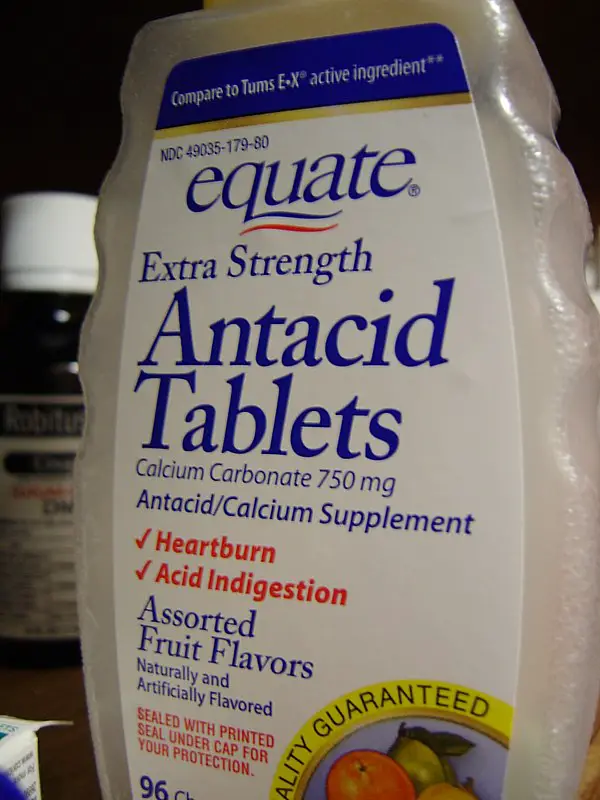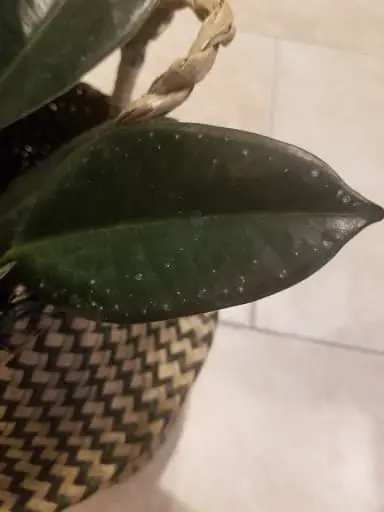Ficus Elastica, which is commonly known as Rubber Plant, is a popular houseplant with dark, glossy leaves. These plants have a modern appearance that goes with a variety of home decor styles. I own a Rubber Plant, and it is one of my favorite house plants. So I was rather distressed to find little white spots forming on the leaves. I was concerned and did some research to find out what was causing these spots. This is what I learned.
The regularly spaced white or yellow spots that tend to form on Rubber Plant leaves are called cystoliths. These spots may resemble bugs, but cystoliths are calcium carbonate crystals that form on cell walls. Cystoliths are not harmful to the plant. In fact, some studies have actually found that cystoliths may improve the plant’s ability to photosynthesize efficiently by scattering light (Pierantoni et al., 2018).
If you are interested in learning more about cystoliths and how they form, continue reading the following article! I will describe what cystoliths are and why plants develop them.
What are cystoliths?
As previously mentioned, cystoliths are calcium carbonate crystals that form in plant leaves. Specifically, they are calcified bodies that are deposited on specialized epidermal plant cells. In many cases, cystoliths are attached to the outer cell wall with an internal silica stalk. The MicroCT image below shows elongated cystoliths in various Ficus species.

Antacid Tablets Made From Calcium Carbonate 
Calcium Carbonate Rocks
Not only do cystoliths form in Ficus plants, they are occur in plants belonging to the following plant families: Urticaceae, Moraceae, Ulmaceae, Cucurbitaceae and Acanthaceae.
You may also see these white spots referred to as lithocysts. The term lithocyst refers to the cells that contain calcium carbonate crystals while the term cystolith refers to the calcium carbonate crystal itself.

Figure F2 from Pierantoni et al., 2018
Why do plants develop cystoliths?
Cystoliths formation is a natural part of Rubber Plant’s growth. Studies have shown that they do not form in response to environmental triggers.
For example, Perantonie et al. (2018) studied Ficus plants from different environments to determine whether environmental factors played a role in mineralization within plant leaves. The results show no correlation between the environment and the plants forming cystoliths. In other words, environmental factors such as light and temperature do not play a significant role in plants forming cystoliths.
Are cystoliths harmful to plants?
Cystoliths are not harmful to plants. On the contrary, cystoliths are actually an integral part of many plant leaves (Pierantoni et al., 2018). Mineralization within plant leaves is a well-preserved trait that has persisted through evolution, indicating that controlled mineralization is advantageous to the plant (Kausch and Horner, 1982).
Studies have shown that cystoliths actually increase the plant’s ability to efficiently photosynthesize by scattering light. In other words, cystoliths help the plant process light and feed themselves more efficiently.
For example, a research study conducted by biologists at the Weizmann Institute of Science in Israel examined cystoliths on two species of Ficus and found that cystoliths efficiently contributed to light redistribution inside the leaf, thus increasing the plant’s ability to efficiently photosynthesize (Pierantoni et al., 2018).
Learn More About Rubber Plant
To learn more about how to care for Rubber Plant, click here to check out my article on how to care for Ficus elastica.

